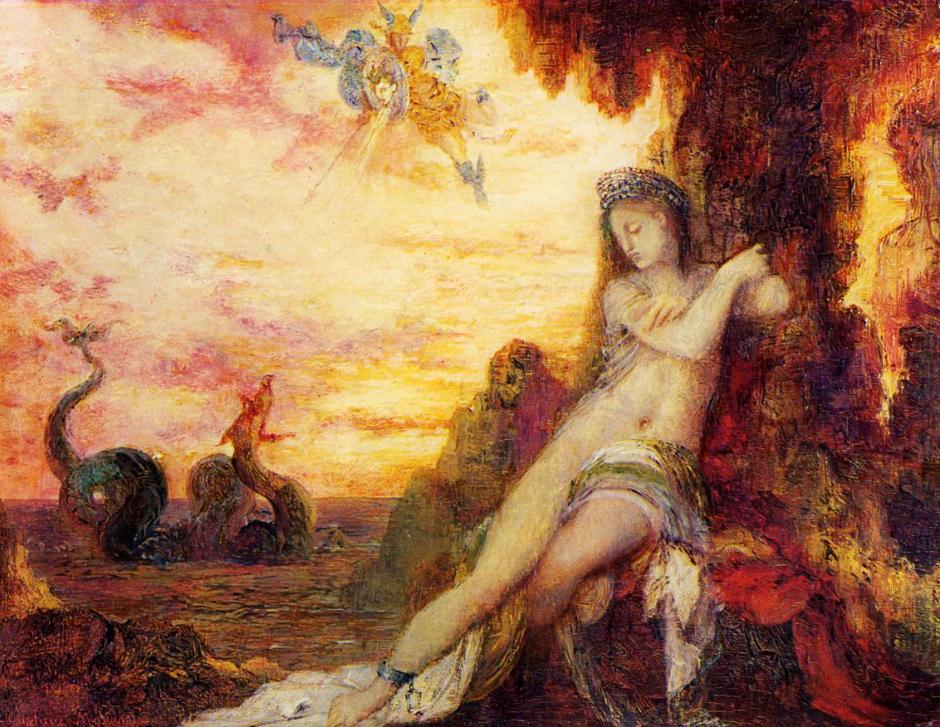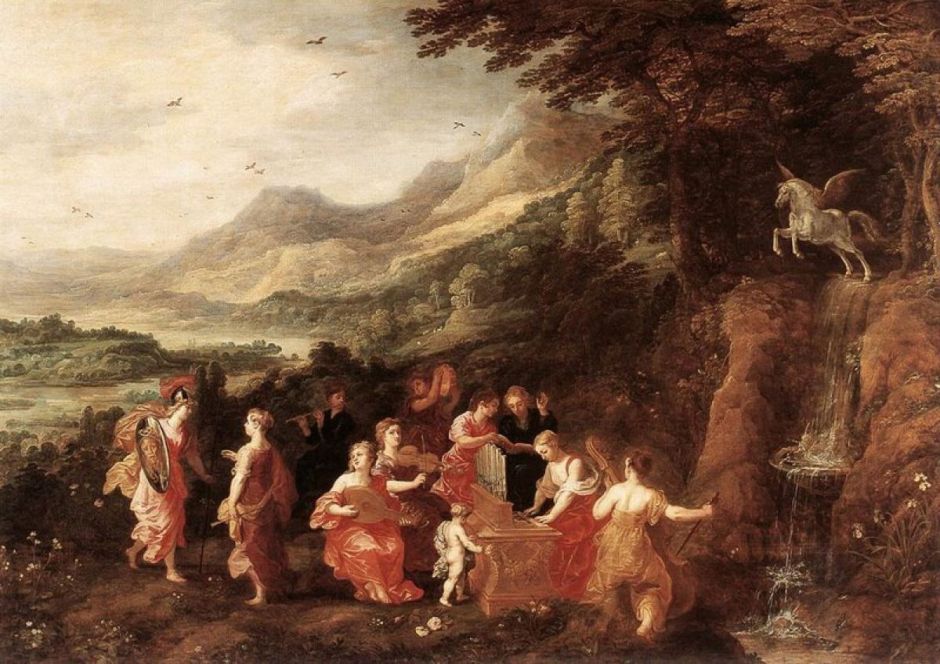The ancient Greek language used in Homer’s accounts of the war against Troy must have been as obscure to later classical authors as it is to modern scholars, leaving some of its terms ill-defined. Among those is the aegis borne by Zeus and Athena, variously interpreted as a shield, breastplate, or even the skin of a goat. Whatever its original meaning, by the time that it was depicted in more modern paintings, it had become an attribute of Athena bearing the image of the face of Medusa the Gorgon. More strictly, that image was known as the Gorgoneion and was added to the aegis in an offering made by Perseus to the goddess after he had beheaded Medusa and rescued Andromeda.

This origin is shown in Peter Paul Rubens’ Perseus and Andromeda from about 1622. Andromeda is at the left, unchained from her rock where she had been placed as a delightful morsel for Cetus, which has just been killed by Perseus and lies at the lower edge with its fearsome mouth wide open. Perseus is in the process of claiming Andromeda’s hand as his reward, for which he is being crowned with laurels, while he holds the polished shield still reflecting Medusa’s face and snake hair.

Gustave Moreau’s Perseus and Andromeda (1870) shows an earlier moment in the story. Just as Cetus arrives to enjoy this most beautiful of victims, Perseus is making his descent from the sky. True to original accounts, he has come not astride Pegasus but on his winged sandals, bearing the polished shield with its image of Medusa’s head.
Most other depictions of the aegis use it to identify Athena or her Roman equivalent Minerva.

Joos de Momper’s splendid Helicon or Minerva’s Visit to the Muses (c 1610) is an account of a story taken from Ovid’s Metamorphoses. Pegasus rears on his wings at the top of a new spring created by his hooves, which cascades down a small cliff at the right. Minerva is at the left, suitably helmeted, holding her spear in her left hand, and her aegis with the right.
Between them are the nine Muses, each busily engaged in exercising their arts, with a mischievous putto fiddling with the back of the organ. Wheeling above the rugged landscape of Helicon are slightly more than nine birds, some bearing the distinctive black and white markings of magpies. Those are the nine Pierides sisters who challenged the Muses, and were transformed into magpies as their punishment for losing.

Distinguishing the three goddesses taking part in The Judgement of Paris, shown in Rubens’ late account from 1632-35, often relies in part on the aegis. The three goddesses are, from the left, Athena with her shield, Aphrodite, and Hera with her peacock.

Antoine Watteau’s unusual treatment of the Judgement of Paris from about 1718-21 shows Paris, Hermes behind him, offering the golden apple of discord to a naked Aphrodite. Beside her is her son Eros, who looks away from Athena, holding her aegis. Behind her is Hera, complete with peacock, who is stealing away with her right hand held in front of her face.

In 1897, Franz von Stuck married an American widow well-known in Munich arts circles, Mary Lindpaintner (née Hoose, 1865-1929), who was already the guardian of the artist’s first daughter. The following year, he painted her in this flattering portrait as Pallas Athena. She’s dressed in armour, complete with the goddess’s distinctive helmet, a long spear, and a breastplate version of the aegis.

The same year, Gustav Klimt painted one of his first works incorporating gold, this portrait of Pallas Athena (1898). Despite her modern appearance, he remains true to tradition in her attributes, including the aegis covering her upper chest, a spear and helmet. Could these two portraits have been mere coincidence?
Although paintings of the Roman goddess of war Bellona are far more unusual than those of Athena/Minerva, she may appear with some of the same attributes as those normally associated with Athena.

When Rembrandt’s career was flourishing in Amsterdam in 1633, he painted this portrait of Bellona, giving her the aegis and helmet of Athena, although she bears a sword rather than the long-handled spear usually associated with Athena.
Finally, an aegis can become one of the props in an artist’s studio.

Jean-Léon Gérôme’s ingenious depiction of Pygmalion and Galatea from about 1890 is set in his studio, where there’s an image of Cupid ready to loose his arrow at the couple. His attention to detail is, as always, delightful, with two masks against the wall at the right, an aegis bearing the head of Medusa, and a couple of statues about looking and seeing.

